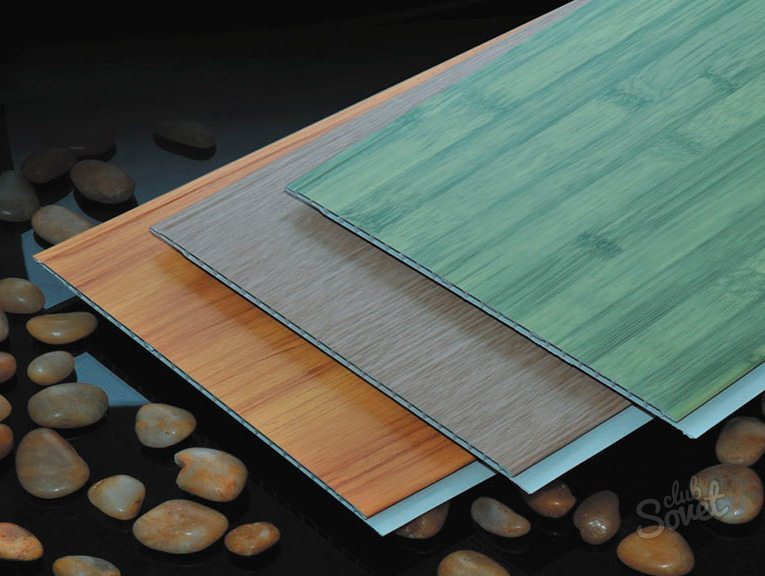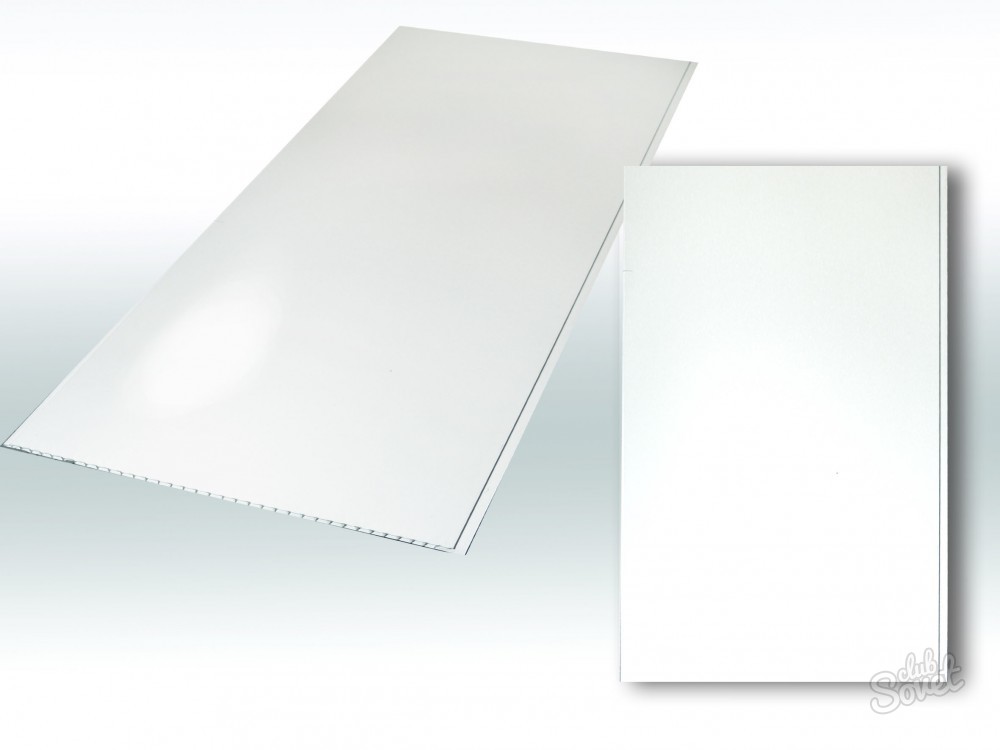Plastic panels are popular material for wall decoration and ceiling. Install plates from polyvinyl chloride can every home master, special tools for this will not need. And our detailed instruction will help you navigate in the work process.
The advantages of using PVC panels are numerous:- They are used when repaired in rooms with conventional conditions and with high humidity - in the kitchen, in the bathroom.
- Plates are perfectly suitable for mounting on a balcony or loggia, as it is withstanding temperature fluctuations from minus 60 to plus 50 degrees Celsius.
- Thanks to the low cost and simplicity of attachment, this is the best material for economic premises.
- They are easy to install on any surface - wooden, concrete, slag block or brick.
- PVC panels are used with success not only for wall sheat, but also for finishing the ceiling.
- Plates are manufactured in different colors, since the material is absolutely resistant to UV radiation.
- For installation, it is not necessary to dismantle from the walls an old finish - it is possible to mount the panels directly on the plaster or wallpaper by creating a pre-clamp.
- You can choose another installation option - fastening to the frame, then the room will turn out to be simultaneously insulated by filling the space formed between the panels and the wall, the heat insulating material.
- If the walls are already aligned, the procedure is simplified - fix the PVC panels to glue.
- When finishing plates from polyvinyl chloride, you can hide the wiring, pipeline and any communications.
- Thanks to the cellular structure of the material, the soundproofing of the room is solved.
However, when using PVC panels, remember that on the staircase spans and in the corridors cannot be installed, according to the requirements of fire safety. It is also important to be aimed at careful exploitation, since during damage to the panels there is only one option - to disassemble the entire wall.

- Depending on the coating, there are matte and glossy glitter, that is, covered with special varnish.
- May have a drawing that is applied with paint, or an adhesive color film with a print.
- By type, the joint is distinguished by seamless panels and such that they are attached with the joint, as the idea and consists in such visibility.
- The dimensions of standard plastic panels are as follows: 2700 millimeters - length, 250 - width, 10 mm - thickness. However, these are only standard sizes, for example, you can find the elongated plates - 6000 mm and very wide - up to 375 mm.
It is interesting to looks like a surface decorated with different panels - different colors, textures and widths.

- Fixation of plastic plates on the adhesive composition. This method is inherent in several drawbacks: the need for the ideal alignment of walls, difficult disassembly, if such a need arises.
- Fasteners with screws. In this case, a screwdriver should be prepared and take into account the high time spent on their screwing and pre-processing of the wooden frame with an antiseptic.
- Mounting on kleimers. The method of using special brackets to incolidate them into the crate is the most popular. All work will be quick and smooth, do not have to drill extra holes.


- Calculate the number of panels that will be required to cover the wall: divide its length by the magnitude of the plate width. Take into account the size of the doors and windows that need to pre-deduct out of the wall length. Also, count how much material will be needed for sites above the door, above and under the window. The number of components is determined specifically for each repairs, given the internal and external corners, as well as how the opening of the openings in the room.
- After purchasing the material, it is not recommended to immediately unpack it, leave the panel in the room so that they lie down 12 hours if the temperature when they are stored before it was above zero. If the material was contained at a negative temperature, then all 48. Unpacking the material is allowed if the temperature in the room does not fall below +10. Do not pull the panel from the pack of the pack, so as not to scratch them.
- Since when installing panels there is no need to carefully prepare the surface, we miss this moment, forgetting about alignment and plastering of walls, and go to the installation of the crate.
- Attach wooden slats to the surface using a dowel and self-tapping screws. Shadow shaft - 50-60 cm.
- So that all the angles are smooth, use the level when working.
- Considering the vertical installation of facing panels, the frame racks are attached horizontally, that is, in the direction parallel to the floor. When horizontal installation of PVC panels, placing vertically. If you suddenly decide to attach the plates of the formation, then also take into account this principle - the lamp must be perpendicular to the panels and in the opposite direction.
- When finishing walls with panels in the bathroom, treat wooden slats with a protective impregnation or aerosol or a metal galvanized profile instead of bars instead of bars.
- Install in the corners of the room internal corners using brackets.
- Starting the panel installation is recommended on the left side, namely from the inner corner.
- Over the landmark to which you need to move, choose a doorway or window.
- Works control using the level so that the strips are located strictly vertically.
- Insert the first plate into the groove the first plate by attaching fasteners to the cable.
- The second panel is inserted with a spike in the groove that you just installed. Do not forget to fix the mounting shelf.
- Further act likewise.
- Insert the last panel with a spike in the groove placed on the corner. If necessary, pre-put the end item.
- To close the "wall-floor" joints, use plastic plinths, for example, with a cable channel for a telephone cable and electrical wiring.
- To arrange the ceiling eaves, use the ceiling molding, which is specifically designed for installation along with PVC panels.

Thus, we introduced you to the possible ways of installing PVC panels and considered in detail the most common of them. Carefully follow the instructions so that you do not have to redo the finish, and light you work!

































